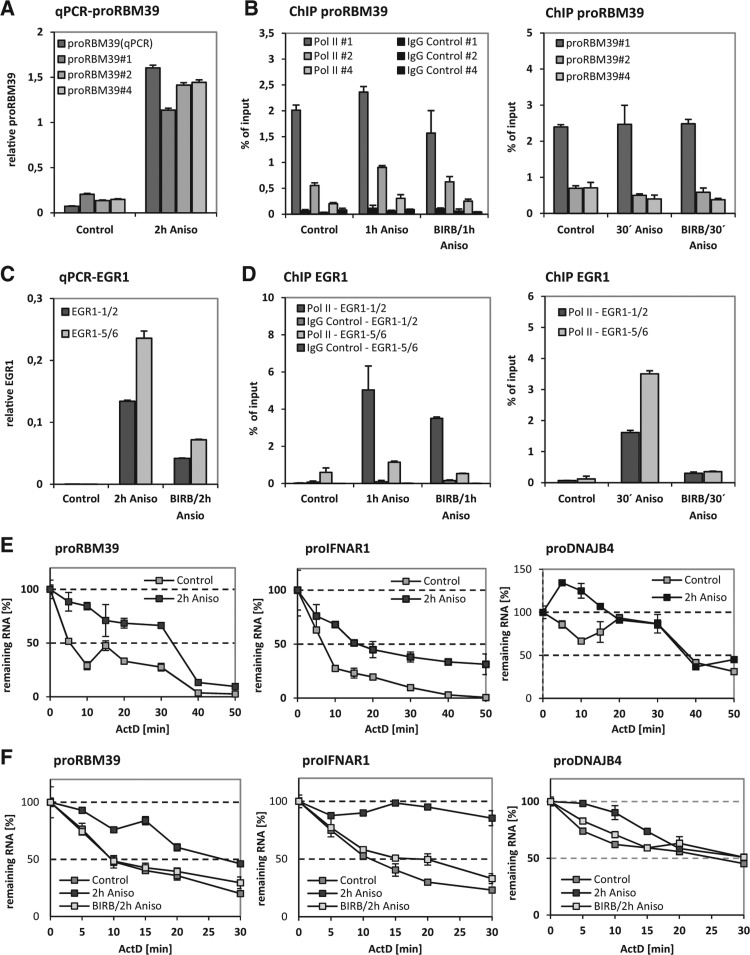FIGURE 6.
PROMPTs are regulated at the level of stability and not by RNAPII-mediated changes in transcription regulation. (A) The ability of three different proRBM39 amplicons along the transcript (#1, #2, and #4) (Andersen et al. 2013) to assess the anisomycin-induced up-regulation of proRBM39 in comparison to the primer pair used in all other qRT-PCR experiments was proven. All primers were similarly effective in detecting the strong induction. We note that the ChIP primer showed higher background amplification than the common qRT-PCR primers. (B) RNAPII ChIP analyses were performed after treating HeLa cells for 30 and for 60 min with anisomycin (10 µg/mL). The DNA-fragments cross-linked to RNAPII and to the control IgG were analyzed by qPCR. Only minor differences in RNAPII occupancy of the proRBM39 transcript region were detected. Notably, the occupancy along the transcript region decreases strongly toward upstream. (C) The anisomycin-induced up-regulation shows a pattern similar to PROMPTs, but the RNAPII occupancy pattern differs strikingly from PROMPTs. (D) Regardless of the duration of anisomycin stimulation the occupancy along the transcript is increased under stimulatory conditions. (E) The stability of PROMPTs was assayed in nonstimulated HeLa cells or in cells after 2 h of anisomycin stimulation by inhibiting RNA-Polymerase II transcription by the addition of 10 µg/mL actinomycin D. Every 5 min the PROMPTs RNA levels were determined by qRT-PCR and are shown as the remaining RNA amount (% of time point 0, start of actinomycin D addition). proRBM39, proIFNAR1, and proDNAJB4 transcripts were stabilized upon stimulation (increase of their half-life from 5–10 min to 20–35 min). The half-life of proEXT1 during anisomycin stimulation was ∼20 min and in the same range of the other PROMPTs that were analyzed (Supplemental Fig. S10A). Under nonstimulated conditions only the first time point before adding actinomycin D was accessible for qRT-PCR measurement as levels after actinomycin treatment were equal to background detection. (F) BIRB796-mediated p38MAPK-inhibtion reverses the gain in RNA stability of PROMPTs. The stability of proRBM39, proIFNAR1, and proDNJAB4 from derived HeLa cells treated as indicated was determined. BIRB796-treament led to an intermediate half-life of PROMPTs RNAs. All graphs are displayed with standard deviations. All experiments were performed independently a minimum of two times and showed similar effects.

